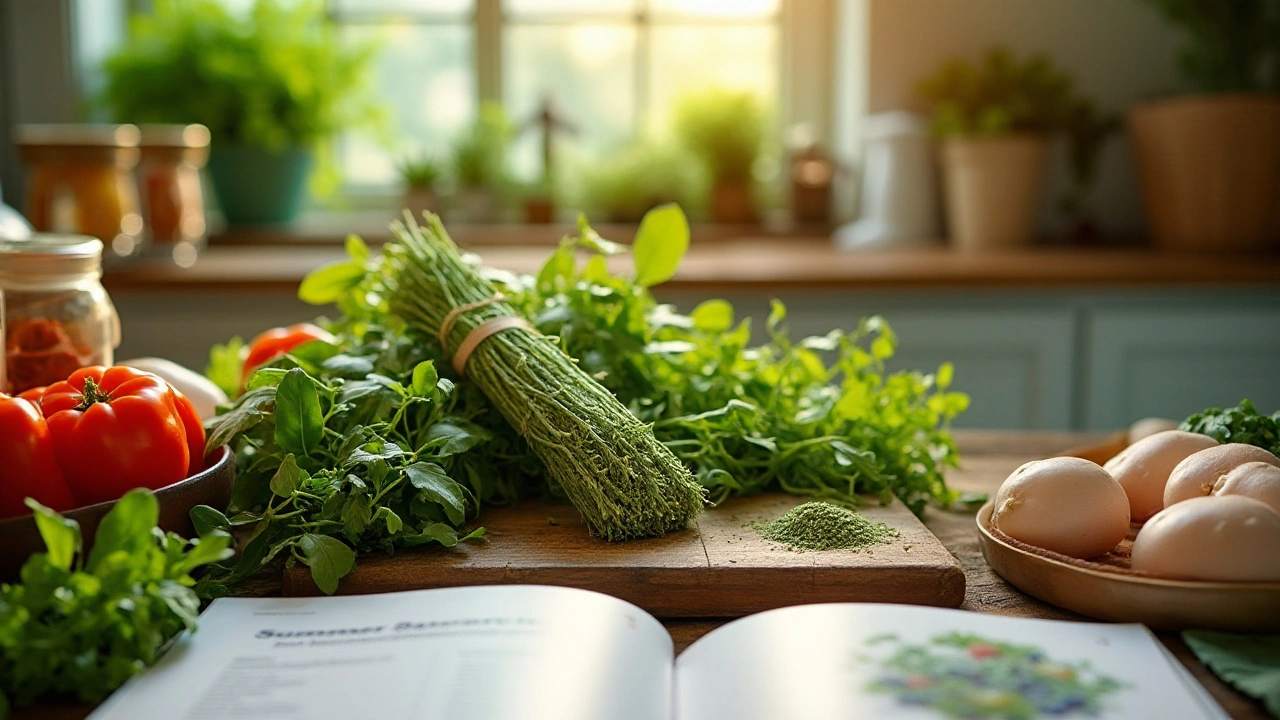Summer Savory – Flavorful Herb for Kitchen & Health
If you’ve ever wondered why some dishes taste bright and a bit peppery, summer savory might be the secret. This tiny green plant packs a punch that’s perfect for meat, beans, and even veggies. Below we’ll cover what makes it special, how to use it safely, and easy ways to enjoy it at home.
What is Summer Savory?
Summer savory (Satureja hortensis) is an annual herb native to the Mediterranean. The leaves are narrow, gray‑green and release a warm, thyme‑like aroma when you crush them. Unlike its close cousin winter savory, it’s softer, milder, and ready to harvest in just 60‑90 days. You can grow it in a window box or garden bed – it loves sunny spots and well‑drained soil.
Cooking with Summer Savory
The flavor works best when added at the end of cooking. Sprinkle fresh leaves over roasted chicken, stir them into bean soups, or mix them into salad dressings. A classic combo is summer savory plus lemon juice on grilled fish – the herb cuts through the richness and adds a fresh bite.
For a quick seasoning blend, combine 1 teaspoon dried summer savory with ½ teaspoon garlic powder, pinch of salt, and a dash of black pepper. Toss this mix with sliced potatoes before baking for a side that’s crisp on the outside and aromatic inside.
Health Perks You Might Not Know
Beyond taste, summer savory offers modest health benefits. It contains antioxidants like rosmarinic acid that help protect cells from damage. Traditional folk medicine has used it for mild digestive upset; a tea made from steeped leaves can soothe an uneasy stomach.
If you’re watching blood sugar, some studies suggest the herb may help regulate glucose levels when used regularly in meals. It’s not a cure‑all, but adding a pinch to your daily cooking is a low‑effort way to boost nutrients.
How to Store & Preserve
Fresh leaves stay vibrant for about a week in the fridge if you keep them dry and sealed in a plastic bag. To make them last longer, wash, pat dry, and freeze the leaves on a tray before transferring to an airtight container. You can also dry the herb: spread stems on a screen, let them air‑dry for 1‑2 weeks, then crumble into a jar.
Dry summer savory is about three times more concentrated than fresh, so use less – roughly one teaspoon dried equals a tablespoon fresh.
Safety Tips
Most people tolerate summer savory well, but large doses of the essential oil can irritate skin or stomach. Stick to culinary amounts (a few teaspoons per dish) and avoid taking concentrated supplements without a health professional’s advice.
If you’re pregnant or nursing, talk to your doctor before using high‑dose herbal teas, just to be safe.
Quick Recipe: Summer Savory Bean Salad
Ingredients:
- 1 can (15 oz) white beans, drained and rinsed
- ¼ cup chopped fresh summer savory leaves
- 2 tbsp olive oil
- 1 tbsp lemon juice
- Salt & pepper to taste
Method: Toss beans with olive oil, lemon juice, and the herb. Season with salt and pepper, let sit for 10 minutes, then serve cold or at room temperature. The salad is ready in under five minutes and showcases savory’s bright flavor.
Whether you’re a home cook looking to spice up everyday meals or just curious about natural herbs, summer savory is an easy addition that delivers taste and modest health perks. Grow it, dry it, sprinkle it – and watch simple dishes become memorable.

Boost Your Health With Summer Savory: The Potent Dietary Supplement
Discover the hidden health benefits of Summer Savory, a potent herb that can enhance your diet and well-being. Learn about its nutritional properties, how it can improve your health, and practical tips for incorporating it into your daily routine. This article aims to provide useful information to help readers make informed decisions about this incredible herbal remedy.